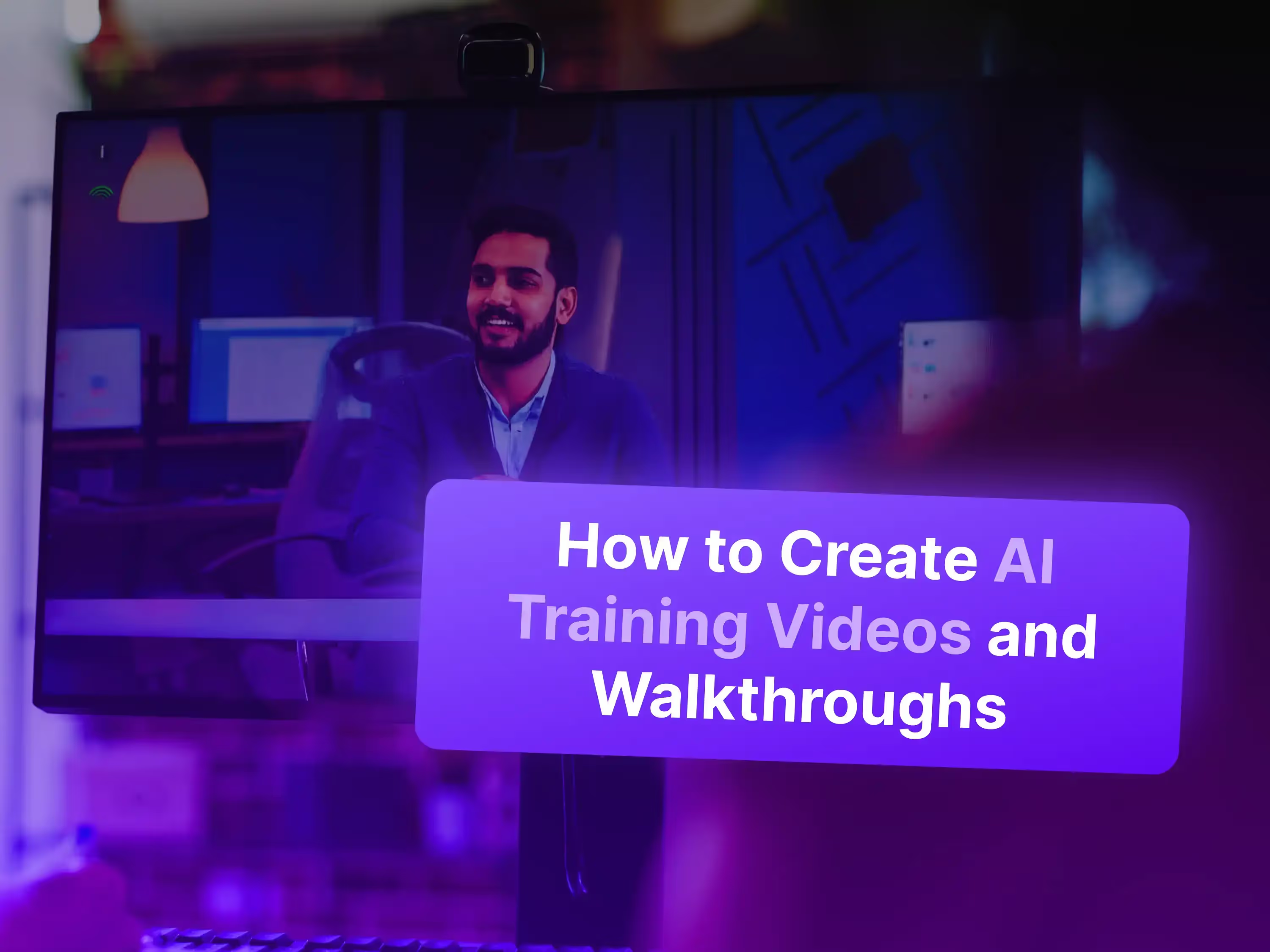視聴者の注意を引いて維持することは、これまで以上に困難になっています。そこで登場するのがインタラクティブ動画で、ストーリーテリングやマーケティングの #1 ツールとなっています。
決まったパスをたどり、背景が 1 つしかなく、長く、短時間で要点をつかむのが難しい従来の動画とは異なり、インタラクティブ動画では、視聴者がコンテンツに積極的に関わり、よりダイナミックで、より早く要点にたどり着くことができます。
この記事では、インタラクティブ動画とは何か、なぜそんなにパワフルなのか、そして独自の動画を作成する方法について、コンセプトからローンチまで詳しく説明します。
インタラクティブ動画とインタラクティブ動画の違いは?
通常、インタラクティブビデオとインタラクティブビデオは同じ意味で使用されますが、注意すべき点がいくつかあります。
インタラクティブ動画 「完全な体験」です。つまり、クリック可能な要素、決定ポイント、分岐する物語を通じて、視聴者が積極的に参加できるようになるということです。結果に影響する選択を視聴者が行う「冒険は自分で選べる」ストーリーのようなものと考えてください。たとえば、視聴者は画面のさまざまな部分をクリックしてバーチャルショールームを探索したり、トレーニングシナリオでさまざまな道を選択したりすることがあります。
インタラクティビティビデオ一方、従来の動画コンテンツに追加された特定のインタラクティブな要素や機能にもっと焦点を当ててください。これらには、動画の核となるナラティブフローを必ずしも変えずに、特定のタイムスタンプで表示されるポップアップ質問、クイズ、ホットスポットなどが含まれます。

インタラクティブビデオと従来のビデオ
従来の動画とインタラクティブ動画の主な違いは、視聴者のエンゲージメントにあります。視聴者はコンテンツを受動的に消費するのではなく、学習やエンターテイメント体験に積極的に参加するようになります。
このようなエンゲージメントの向上は、通常、情報の保持率を高め、コンテンツとの有意義なつながりを深めることにつながります。
インタラクティブ動画は 視聴者の定着率を最大 90% 向上 従来のビデオ形式と比較してください。この劇的な改善は、いくつかの重要な要因によるものです。
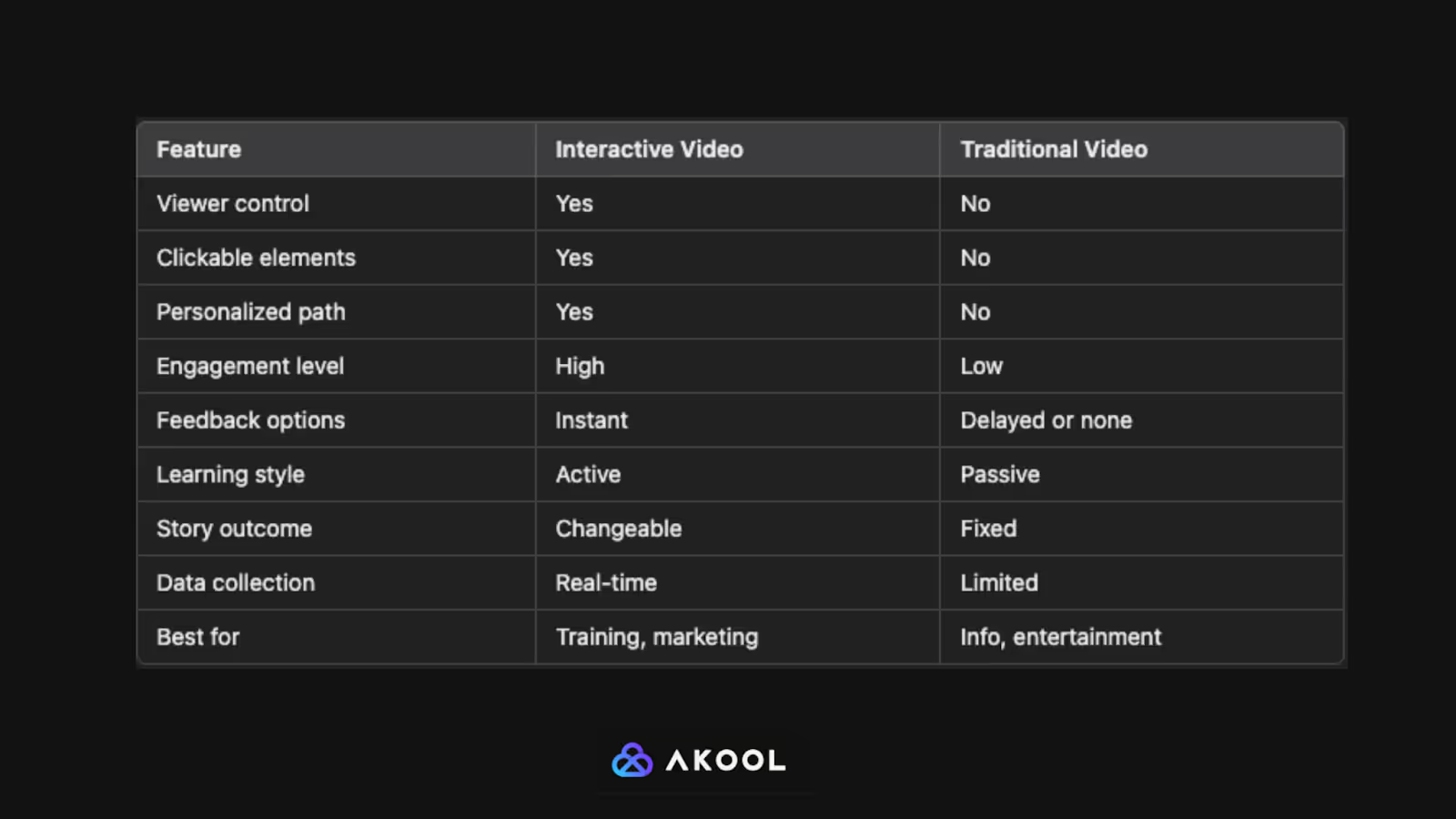
AI を活用したツールでインタラクティブな動画を作成する方法
インタラクティブ動画の制作がかつてないほど簡単になりました。
高価な制作会社を雇う必要はもうありません。 ジェネレーティブAI また、AIを活用したプラットフォームにより、最初のコンセプトから最終的なレンダリングまで、制作ワークフロー全体が合理化されるため、ビデオ編集に関する幅広い専門知識やプログラミングの知識は必要ありません。
1。アバター生成
トーキングアバター 写真またはスクリプトだけで本物そっくりのプレゼンターを作成できます。つまり、人間が主導するインタラクティブな動画を制作できるということです。 人材を雇ったりビデオ撮影をしたりすることなく。説明ビデオ、オンボーディングガイド、さらにはインタラクティブコンテンツのバーチャルショッピングアシスタントにも最適です。
また、アバターをさまざまなユーザー層や地域に合わせて、さまざまな視聴者に自動的に個人的なタッチを加えることもできます。
2。人工知能翻訳
インタラクティブ動画は、文字通り視聴者の言葉を話すことで成功します。と AI を活用した翻訳、1つの動画を多言語体験に変えて、ユーザーが母国語で探求し、交流できるようにすることができます。これは字幕だけの問題ではありません。画面上のコンテンツと完全に同期した完全なナレーション翻訳です。
グローバルキャンペーン、トレーニングモジュール、または観光体験において、このツールは言葉の壁を打ち破り、アクセシビリティを簡単に高めます。
インタラクティブ動画をデザインするためのベストプラクティス
インタラクティブ動画をデザインする際に留意すべき3つのベストプラクティスを次に示します。
1。 インタラクションをシンプルかつ直感的に
選択肢が多すぎたり、コントロールが複雑すぎたりして、視聴者を圧倒しないようにしましょう。明確なボタン、短いプロンプト、論理的なナビゲーションを使用することで、ユーザーは次に何をすべきかを正確に把握できます。スムーズ、簡単、そして楽しい、自由に選べるアドベンチャーと考えてください。
2。目的を持ったデザイン
すべてのやりとりには、教えるため、導くため、関与させるためなど、理由が必要です。そのためだけにクリック数を増やすことは避けてください。トレーニング動画で理解度を確認したり、マーケティングクリップで商品を紹介したりするなど、インタラクティブな要素が動画の目標に沿っていることを確認してください。
3。テストと最適化
起動前に動画のユーザーテストを行います。視聴者がクリックした場所、ドロップオフした場所、スキップした内容を確認できます。そのフィードバックをフローの改善、セグメントの短縮、指示の明確化に役立ててください。ここでは、ヒートマップや分析などのツールが非常に役立ちます。
インタラクティブ動画の実際の例とユースケース
インスピレーションが必要ですか?ブランドがインタラクティブ動画をどのように使用したかの例を 3 つご紹介します。
1。旅行業界
タイ政府観光局によるアメージング・タイランド・キャンペーンは、Smartzerのショッパブル・ビデオ・ソフトウェアを使って、伝統的な旅行映画を魅力的なインタラクティブな体験に変えました。
視聴者は動画を直接クリックして、ホテル、レストラン、ウェルネススポット、ツアーパッケージなどの注目の目的地を探索できます。各要素には詳細情報や行動を促すフレーズがリンクされています。
このインタラクティブな形式により、ユーザーはコンテンツを簡単に見つけて操作できるようになり、その結果、 39.7% のエンゲージメント率 と 24.2% クリックスルー率、従来のビデオベンチマークを大幅に上回っています。
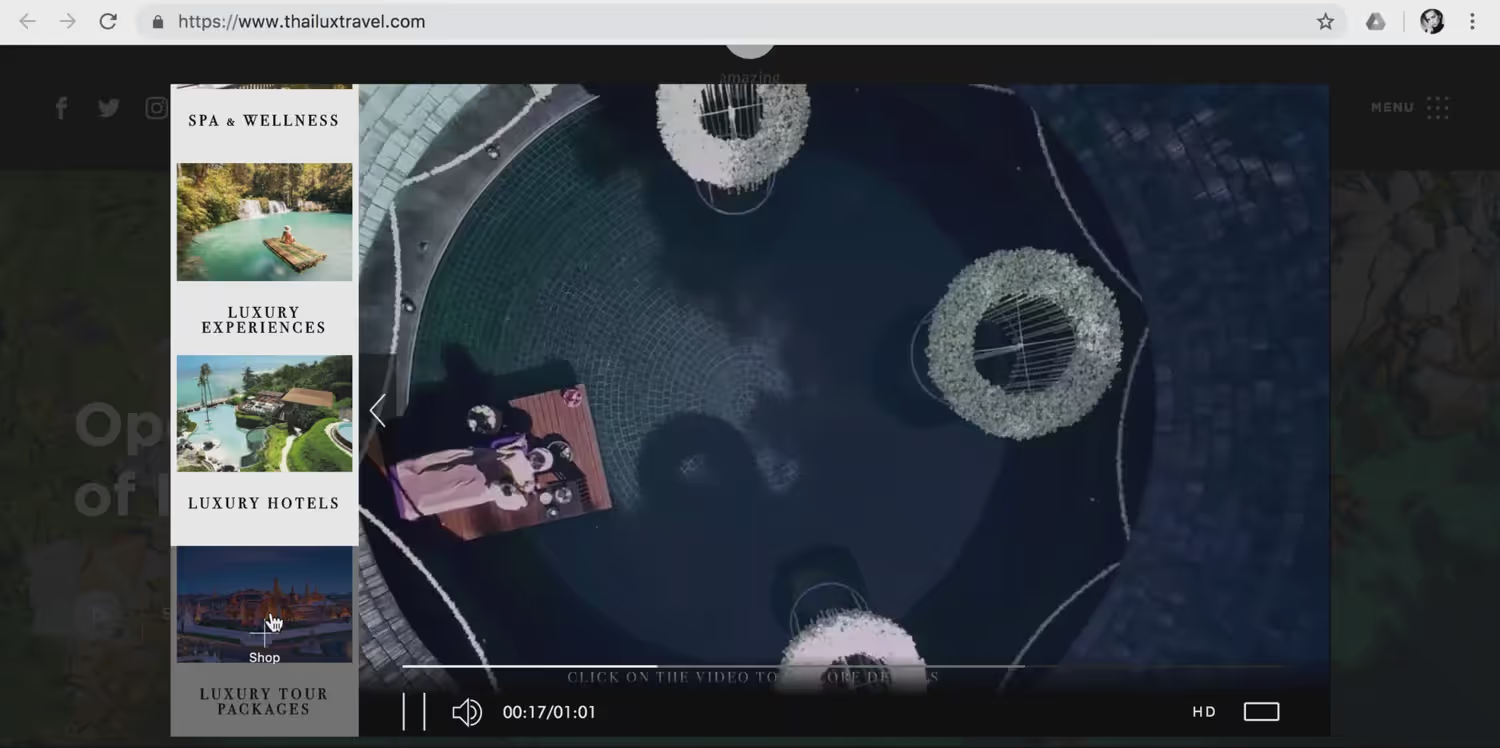
ソース: Smartzer
2。食品・飲料業界
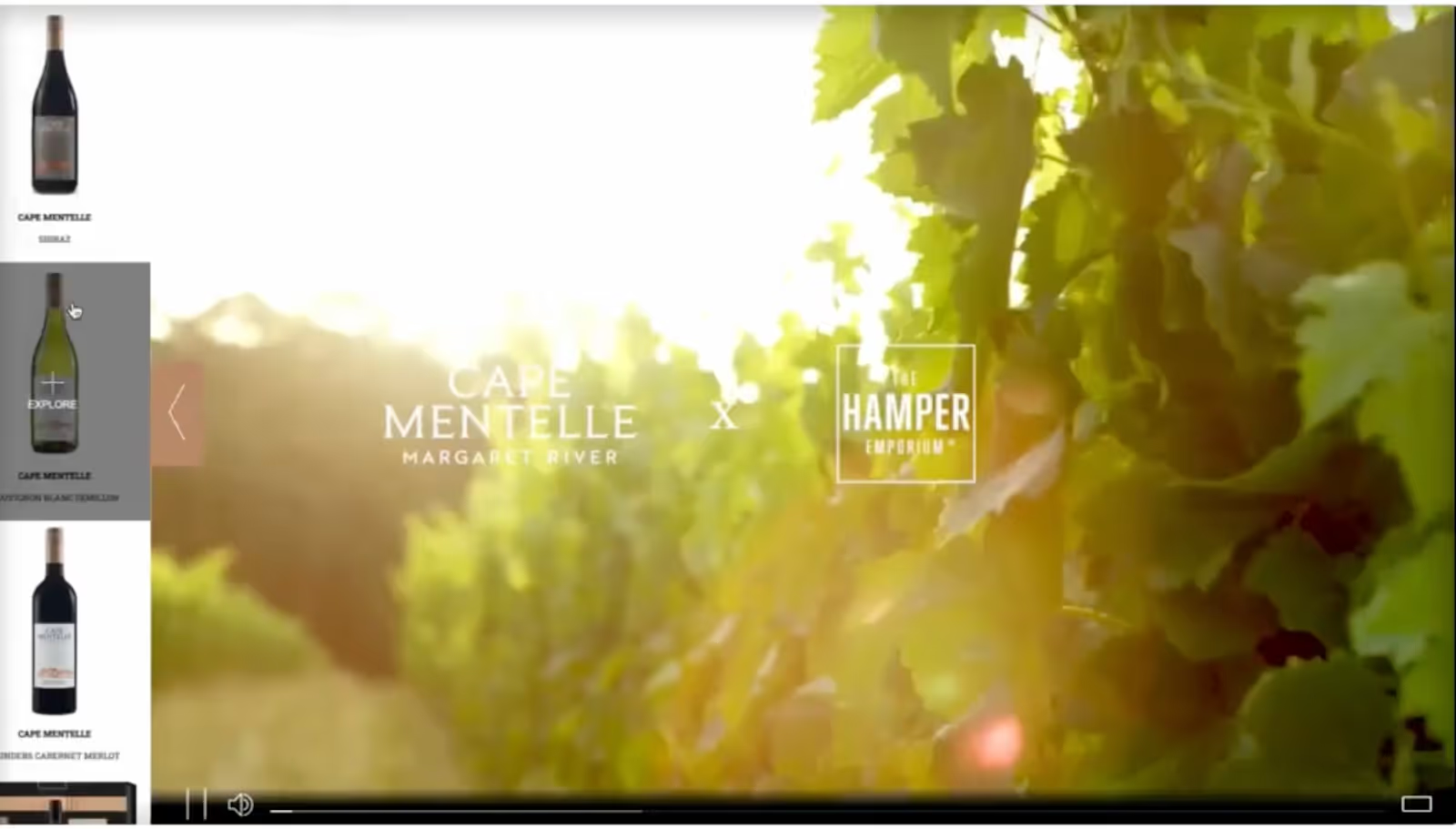
ソース: Smartzer
オーストラリアの歴史あるワイナリー、ケープ・メンテルは、ザ・ハンパー・エンポリアムと共同でショッピングできる動画を公開し、グルメギフト市場への参入を拡大しました。
このインタラクティブな形式により、視聴者は動画内で商品を直接探索して購入することができ、シームレスで没入感のあるショッピング体験が生まれました。このキャンペーンは、次のような素晴らしい成果を上げました。 商品のCTAクリック率 93% と 40% のエンゲージメント率、ケープ・メンテルをワイン業界とグルメギフト業界の両方のデジタルイノベーターとして位置付けています。
3。カスタマーサービス

ここでは、実際に使われているインタラクティブ動画の魅力的な例をご紹介します。 従業員研修。
このシナリオでは、特にチームメンバーがクライアントとのやりがいのある会話を自信を持って進められるように支援する、カスタマーサービススキルに焦点を当てています。
このトレーニング体験では、視聴者は複雑な状況を提示する動揺した顧客であるジョセフと出会います。シナリオが進むにつれ、従業員はジョセフの懸念にどう対処するかについてリアルタイムで決定を下さなければなりません。それぞれの選択は異なる会話経路に分かれ、取ったアプローチに基づいてさまざまな結果につながります。
たとえば、従業員がジョセフの不満を十分に認識せずにすぐに解決策を提案することを選択した場合、状況はエスカレートする可能性があります。しかし、共感できる対応を選択し、その後に戦略的な問題解決を行えば、前向きな解決につながる可能性があります。



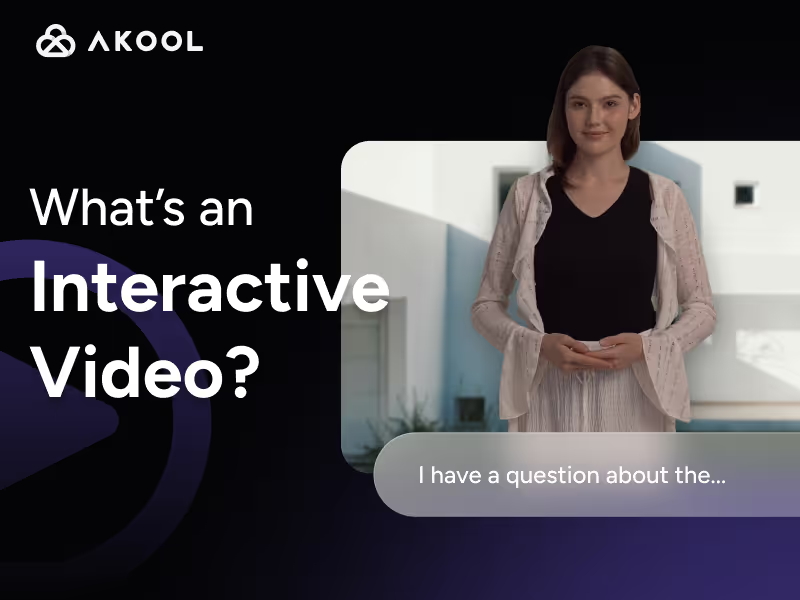




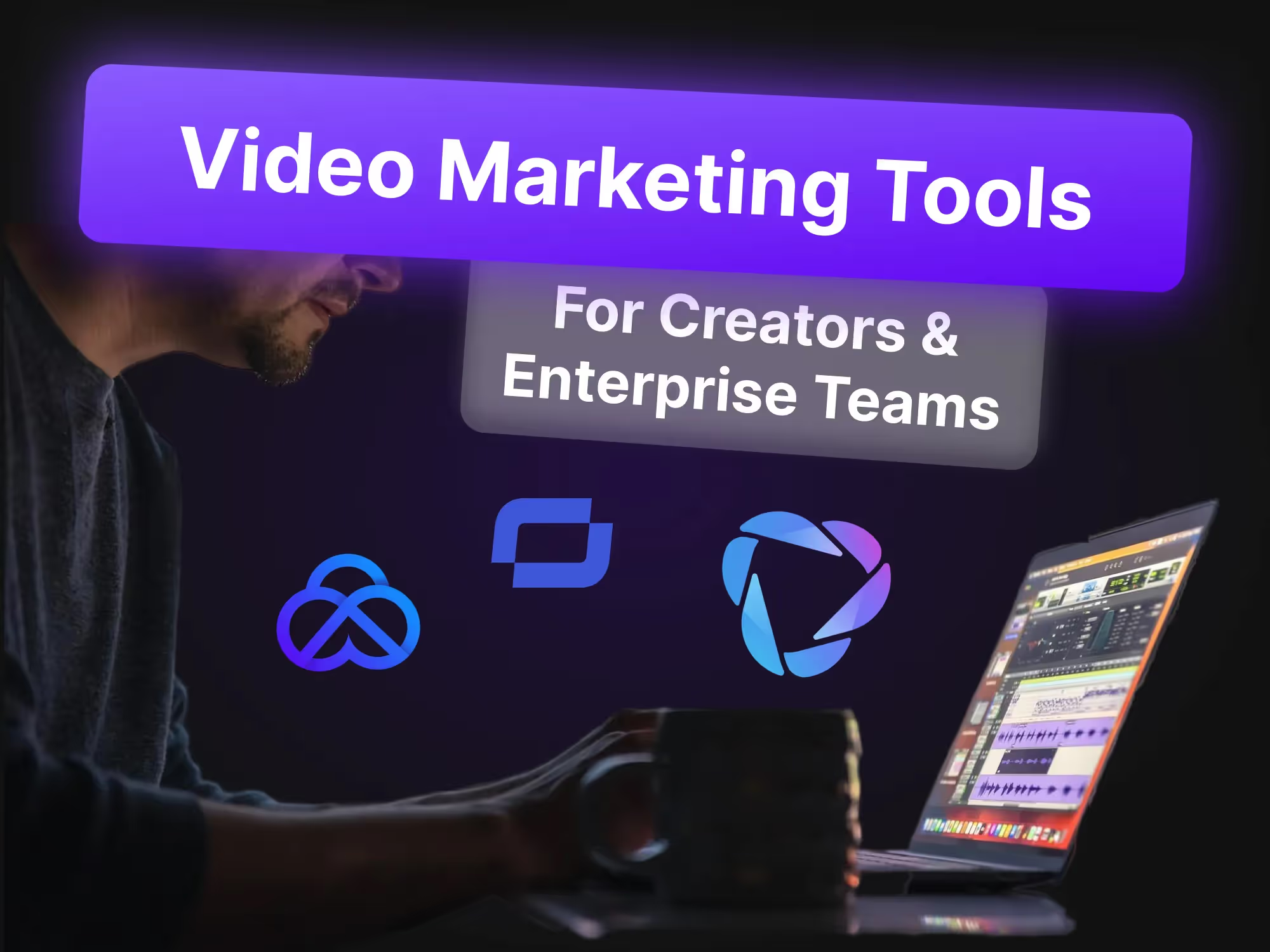
%20-%20Akool%20Blog%20Banner.avif)
